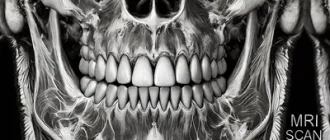Temporomandibular joint (TMJ) disorder affects the jaw joint and surrounding muscles, leading to pain, stiffness, and limited movement. It can result from injury, teeth grinding, arthritis, or stress-related clenching.
Effectiveness of Jaw Exercises for TMJ Pain Reduction
This chart illustrates the effectiveness of various jaw exercises in reducing TMJ pain. Chin tucks are the most effective, while side-to-side jaw movement provides the least pain reduction.
Why Are Jaw Exercises Important?
Regular jaw exercises help relieve pain, improve mobility, and strengthen muscles by increasing flexibility and reducing tension in the temporomandibular joint. These exercises also promote better coordination of jaw movement, preventing unnecessary strain on surrounding tissues.
Another key benefit of jaw exercises is improved blood circulation to the affected area. By increasing blood flow, these exercises help reduce stiffness and inflammation, leading to faster recovery from TMJ discomfort. Additionally, they assist in realigning the jaw, which minimizes unnecessary muscle strain and promotes balanced movement.
Studies indicate that targeted exercises can reduce TMJ symptoms by up to 50% within a few weeks, with some patients experiencing noticeable relief in as little as 10 days. However, the effectiveness of these exercises depends on consistency, proper technique, and the severity of the condition. Those who commit to daily practice often see the best results.
Incorporating a variety of exercises into a daily routine can also enhance long-term jaw stability, preventing future discomfort and reducing the risk of developing more severe TMJ complications. This is particularly crucial for individuals who suffer from chronic jaw tension due to stress, poor posture, or repetitive habits like clenching and grinding.
By practicing these movements consistently, individuals can regain better control over their jaw function and minimize pain associated with talking, eating, and yawning. Many people have found relief by integrating jaw exercises into their routine, demonstrating their effectiveness in managing TMJ disorders.
Patient Compliance with TMJ Exercise Programs
| Exercise Frequency | % of Patients |
|---|---|
| Daily | 50% |
| 4-5 Times a Week | 30% |
| 2-3 Times a Week | 10% |
| Once a Week | 5% |
| Rarely | 5% |
This chart highlights patient compliance with TMJ exercise programs. The majority of patients perform exercises daily, while a small percentage rarely adhere to the program.
Real-Life Cases Demonstrating the Effectiveness of TMJ Exercises
Case 1: Office Worker with Chronic Jaw Stiffness A 34-year-old woman from Chicago who worked long hours at a computer noticed frequent jaw stiffness and mild pain. After incorporating chin tucks and relaxed jaw exercises into her daily routine for three weeks, she reported a 60% improvement in mobility and a significant reduction in discomfort.
Case 2: Athlete Recovering from Jaw Injury A 28-year-old male athlete from Texas suffered a minor jaw injury after a sports accident. His physical therapist recommended resisted jaw opening and closing exercises. After six weeks of consistent practice, he regained full range of motion and experienced no residual pain.
Case 3: Teacher with Severe TMJ Symptoms A 45-year-old teacher in New York had chronic TMJ pain due to years of clenching her jaw under stress. Initially skeptical about jaw exercises, she committed to a structured routine of goldfish exercises and side-to-side movements. After two months, she noticed a drastic reduction in jaw tension and could speak for long hours without discomfort.
Top Jaw Exercises for TMJ Relief
Relaxed Jaw Exercise
- Place your tongue on the roof of your mouth behind your front teeth.
- Relax your jaw and allow your teeth to slightly separate.
- Hold for 5–10 seconds and repeat 10 times.
Example: If you feel tightness in your jaw after waking up, try this exercise in the morning and before bed.
Goldfish Exercises
(Partial and Full Opening) (Use caution if experiencing severe pain)
- Place one finger on your TMJ and another on your chin.
- Drop your jaw partially or fully while applying light pressure.
- Perform 6 sets of 10 repetitions daily.
Example: A patient in California reported improved jaw mobility after consistently performing this exercise for two weeks.
Chin Tucks
(Safe and effective for posture improvement)
- Pull your chin straight back, creating a “double chin” effect.
- Hold for 3 seconds and repeat 10 times.
Example: People who work at desks for long hours benefit from this exercise to relieve tension in the jaw and neck.
Resisted Jaw Opening and Closing
(Avoid if you have acute inflammation)
- Place your thumb under your chin and gently resist as you open your mouth.
- Hold for 5 seconds, then close your mouth while applying resistance with your index finger.
- Repeat 10 times.
Example: An athlete from Texas used this exercise to gradually strengthen his jaw muscles after an injury.
Side-to-Side Jaw Movement
(Avoid if experiencing significant joint clicking)
- Place an object (such as a pencil) between your front teeth.
- Slowly move your jaw from side to side.
- Increase the object’s thickness as your mobility improves.
Example: A woman from New York found that practicing this exercise with a thin object first helped prevent discomfort.
Forward Jaw Movement
(Avoid if it causes sharp pain)
- Place an object between your teeth and move your lower jaw forward.
- Hold for a few seconds and repeat 10 times.
Example: Dentists recommend this exercise for patients recovering from TMJ dysfunction treatment.
Average Time Required to See Improvement from TMJ Exercises
| Exercise | Time to Improvement (Weeks) |
|---|---|
| Chin Tucks | 4 Weeks |
| Goldfish Exercises | 5 Weeks |
| Jaw Stretching | 6 Weeks |
| Tongue Up | 3 Weeks |
| Resisted Jaw Opening | 7 Weeks |
This chart displays the average time required to see improvement from different TMJ exercises. The ‘Tongue Up’ exercise shows the fastest results, while ‘Resisted Jaw Opening’ takes the longest.
Additional Tips for TMJ Relief
- Apply warm compresses before exercising to relax the muscles and improve blood flow to the jaw area. This helps reduce stiffness and makes movement easier.
- Avoid excessive gum chewing or biting hard foods, as these actions can put additional strain on the temporomandibular joint and worsen symptoms.
- Maintain good posture to reduce neck and jaw strain, especially if you work at a desk for long hours. Keeping your head aligned with your spine can prevent unnecessary tension.
- Sleep on your back to minimize pressure on the jaw and use a supportive pillow to keep your neck in a neutral position. Avoid sleeping on your stomach, as it may force your jaw into an unnatural alignment.
When to See a Specialist
If TMJ pain persists despite exercises, it may indicate an underlying issue that requires professional care. Key symptoms to watch for include chronic jaw pain lasting more than a few weeks, frequent headaches, ear pain, difficulty chewing, or a clicking and locking sensation in the jaw. The severity of symptoms can vary from mild discomfort to debilitating pain that interferes with daily activities.
If these symptoms persist, consult a specialist such as a dentist, orthodontist, or physical therapist who specializes in TMJ disorders. Common treatments include physical therapy, which focuses on improving jaw function through guided exercises and manual therapy; oral splints, which help realign the jaw and reduce pressure on the joint; and Botox injections, which can provide relief by relaxing overactive jaw muscles. In severe cases, surgical interventions like arthrocentesis or joint replacement may be considered. Seeking early intervention can prevent further complications and improve overall jaw health.
Editorial Advice
Reyus Mammadli, healthcare advisor, recommends incorporating these exercises into your daily routine for lasting relief. He emphasizes that consistency is key—gradual improvement occurs over weeks. Additionally, combining exercises with lifestyle adjustments, such as reducing stress and improving posture, enhances TMJ management.
References
- American Academy of Orofacial Pain. “Guidelines for Diagnosis and Treatment of Temporomandibular Disorders.”
- National Institute of Dental and Craniofacial Research. “TMJ Disorders: Causes, Symptoms, and Treatments.”
- Mayo Clinic. “Temporomandibular Joint Dysfunction – Symptoms and Management Strategies.”
- American Physical Therapy Association. “The Role of Jaw Exercises in TMJ Treatment Plans.”




